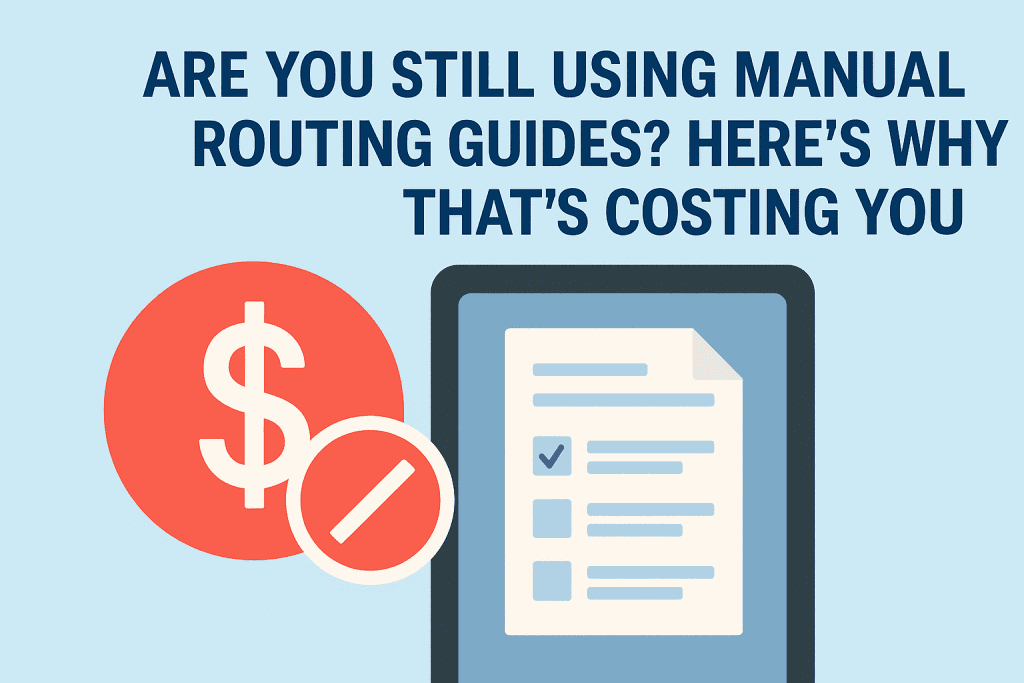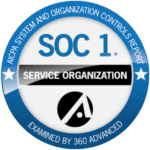Are You Still Using Manual Routing Guides? Here's Why That's Costing You
For many companies, the routing guide is still a static PDF. It’s often outdated, buried in a shared folder, or sitting unnoticed in a vendor’s inbox, making it easy to ignore and difficult to enforce. It lists preferred carriers, lanes, and instructions, but it's rarely referenced and almost never updated. If your routing guide isn't dynamic, automated, and integrated into your logistics process, it's more than just outdated. It's quietly costing you real money.
At Hatfield & Associates, we see this issue every day. Here's how manual routing guides are driving up freight costs and creating unnecessary risk.
1. There's No Enforcement
Manual routing depends on people remembering and following instructions. Vendors or warehouse staff have to check the routing guide, interpret it correctly, and make the right carrier selection. One misrouted shipment can trigger avoidable fees, lost discounts, and carrier non-compliance issues.
A modern TMS removes the guesswork by automating routing decisions at the point of shipping. Vendors see pre-approved carrier options, labels, and documentation based on your actual business rules.
2. They Become Outdated Quickly
The freight market moves fast. Fuel surcharges shift weekly, capacity changes across regions, and carriers regularly update their pricing. A PDF from six months ago won’t reflect the current rate structure or service levels.
When routing is built into a TMS, updates happen automatically. Your routing instructions stay aligned with current contracts, real-time rates, and carrier performance without anyone needing to manually distribute an updated document.
3. You Miss Out on Consolidation Opportunities
Without system-driven routing, each shipment gets planned in a silo. That leads to duplicate LTLs heading to the same customer, low-volume truckloads, or multiple deliveries that could have been combined into one.
Our platform flags those opportunities. Whether it's consolidating by consignee, date, or division, the system identifies more efficient ways to move freight and cut costs.
4. You Can’t See What’s Actually Happening
When routing is handled manually, the data is fragmented. It’s split between spreadsheets, shipping systems, and email threads. This makes it nearly impossible to track compliance, measure cost performance, or pinpoint problem lanes.
By managing routing through a TMS and integrated freight audit/payables platform, you get clean, consolidated data. That makes it easier to spot trends, negotiate better rates, and take control of your freight strategy.
The Bottom Line
Static routing guides might have worked in the past, but they don't stand up to the pace or complexity of today's freight environment. If you're still relying on PDFs, spreadsheets, or maps to manage your routing decisions, you're likely paying more than you realize.
Ready to see how dynamic routing could streamline your operation and reduce freight spend? Let’s talk.
Modern Tools That Eliminate Misrouted Freight
Mistakes happen, but if wrong routing is a recurring issue, you need a plan. Here’s what we recommend:
- Implement real-time routing controls: A modern TMS enforces routing rules directly at the point of shipment, preventing accidental or intentional misrouting.
- Use a vendor portal to centralize your routing guide: This removes the need to send out updated PDFs every time there's a change. Routing logic lives in one place, always current, and accessible when vendors are printing labels or booking shipments.
- Identify the root causes: Freight audit data can reveal which vendors or facilities are most frequently deviating from the guide.
Wrong routing is more than an inconvenience—it’s a controllable source of waste. With the right tools and visibility, it’s also one of the fastest problems to fix.
If you’re weighing manual routing costs against automation, this TMS selection checklist can help you compare solutions more effectively.
Frequently Asked Questions
What is manual freight routing?
Manual freight routing refers to the process of planning and managing shipments using spreadsheets, emails, phone calls, and human decision-making instead of an automated TMS (Transportation Management System).
Why is manual routing more expensive?
Manual routing is more costly due to labor hours, higher error rates, missed savings from optimized routing, and slower responses to rate changes or disruptions in the supply chain.
What are the risks of relying on manual routing?
Risks include shipment delays, poor carrier selection, invoice errors, lack of visibility, and inefficiencies that hurt margins. Manual systems often lack documentation and audit trails, which creates compliance and service issues.
Can a TMS reduce routing costs?
Yes. A TMS can automate carrier selection, apply routing guides, track shipments in real time, and ensure cost-effective mode optimization—significantly reducing routing costs and improving operational efficiency.
How can I tell if manual routing is costing my business too much?
Look for signs like inconsistent carrier rates, frequent billing issues, low on-time delivery rates, or time-consuming manual processes. These are all indicators that switching to a TMS could save time and money.




